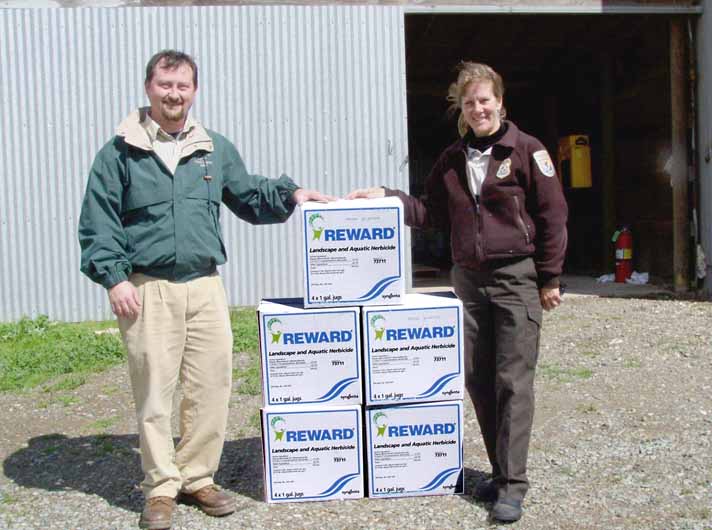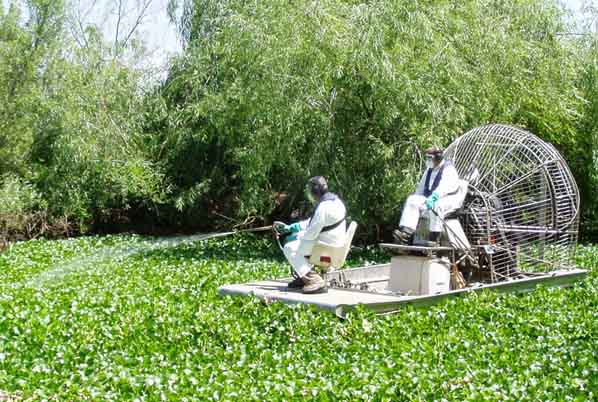Stone Lakes National Wildlife Refuge
The Stone Lakes National Wildlife Refuge is in the heart of California's Central Valley just south of Sacramento in the northern reaches of the Sacramento-San Joaquin River Delta. Since the inception of the Refuge in 1994, staff and partners have been working to restore historic wetland communities and enhance existing habitats in the 6,000 acre complex of wetland, riparian and grassland habitats that comprises the Stone Lakes NWR. This Refuge provides key wintering and migrating habitat for thousands of waterfowl, shorebirds and sandhill cranes each year, as well as breeding habitat for wood ducks, mallards and cinnamon teal.
Substantial effort has gone to enhancing the two historic lakes and their remnant riverine sloughs, which are some of the Refuge's most important habitats to resident waterfowl. These perennial wetland communities provide important brood rearing habitat for waterfowl and other wetland birds. However, these habitats are threatened by an aggressive noxious plant, Eichhornia spp, also known as water hyacinth.
 Water hyacinth has been a problem in several areas of the United States since its introduction from South America in the early 1900s. This noxious weed can rapidly colonize perennial freshwater wetlands. As few as 25 individual plants can expand to cover 10,000 square meters of water surface in one growing season. This expansion creates a thick, impenetrable mat of vegetation that prevents waterfowl from foraging. Furthermore, water hyacinth creates additional problems by providing an ideal breeding ground for mosquitoes, reducing water quality, impeding navigation and water circulation, clogging and damaging irrigation pumps, and obstructing water sports like boating and swimming.
Water hyacinth has been a problem in several areas of the United States since its introduction from South America in the early 1900s. This noxious weed can rapidly colonize perennial freshwater wetlands. As few as 25 individual plants can expand to cover 10,000 square meters of water surface in one growing season. This expansion creates a thick, impenetrable mat of vegetation that prevents waterfowl from foraging. Furthermore, water hyacinth creates additional problems by providing an ideal breeding ground for mosquitoes, reducing water quality, impeding navigation and water circulation, clogging and damaging irrigation pumps, and obstructing water sports like boating and swimming.
In each of the last two years, Syngenta has generously donated Reward⪚ herbicide to help refuge staff control water hyacinth; the total value of these donations is $43,000. Syngenta has supported DU projects in the US and Canada from coast to coast since 2005, and Syngenta's product donations have earned them the DU Gold Teal Award. Their donation to Stone Lakes NWR is part of DU's national partnership with CropLife America, a trade association representing manufacturers and distributors of plant science solutions for agriculture and pest management in the U.S. Syngenta is a member of CropLife America and understands the value of their contributions to wetland and waterfowl conservation.
 With the contributions from DU and Syngenta, Stone Lakes NWR will be able to meet its goal of controlling more than 700 acres of water hyacinth. Furthermore, Syngenta's contributions will be used to leverage federal grant funds for additional habitat improvements, through the North American Wetlands Conservation Act (NAWCA). Using matching contributions from Syngenta and other partners, DU recently submitted a NAWCA proposal to restore and enhance additional wetlands in the Delta. The proposed NAWCA grant would enhance another 400 acres of wetlands on the Refuge, as well as thousands more in the Yolo Bypass Wildlife Area and Cosumnes River Preserve.
With the contributions from DU and Syngenta, Stone Lakes NWR will be able to meet its goal of controlling more than 700 acres of water hyacinth. Furthermore, Syngenta's contributions will be used to leverage federal grant funds for additional habitat improvements, through the North American Wetlands Conservation Act (NAWCA). Using matching contributions from Syngenta and other partners, DU recently submitted a NAWCA proposal to restore and enhance additional wetlands in the Delta. The proposed NAWCA grant would enhance another 400 acres of wetlands on the Refuge, as well as thousands more in the Yolo Bypass Wildlife Area and Cosumnes River Preserve.
Water hyacinth and other noxious weeds like common reed (Phragmites) and perennial pepperweed (Lepidium) are a serious threat to waterfowl habitat. It is the long term goal of DU and Syngenta to work together to restore and enhance habitat for waterfowl across North America. Plant control products such as Reward⪚ and Touchdown⪚ are being utilized judiciously to improve wetland habitat for ducks and hundreds of species of wetland-dependent wildlife.
Ducks Unlimited uses cookies to enhance your browsing experience, optimize site functionality, analyze traffic, and deliver personalized advertising through third parties. By continuing to use this site, you agree to our use of cookies. View Privacy Policy